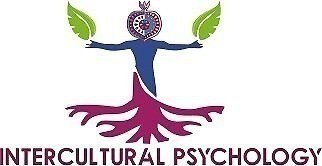The Journey Inward: Finding Your True North
The Journey Inward: Finding Your True North
By Dr. Nadia Thalji | Intercultural Psychology
In a world that is constantly shifting—faster, louder, and more disconnected—many of us are left asking: Where am I going? What truly matters? How do I find my way back to myself?
These are not abstract questions. They are human ones. And at the heart of them lies a universal longing: to find our True North.
What Is True North?
True North is more than direction. It's your inner compass—that quiet knowing that guides you toward authenticity, integrity, and purpose. It’s not something external to chase. It’s something you realign with. A return to clarity when the noise of life has knocked you off course.
We each have a True North. But many of us lose touch with it. Trauma, social pressure, cultural dislocation, and daily distractions can pull us into survival mode, numbing or overriding our internal sense of direction. Over time, we may forget what it even feels like to be grounded in ourselves.
Coming Home to Oneself
To come home to yourself is to slow down long enough to remember who you are beyond the roles, expectations, and historical burdens you carry. It’s a process of reconnection—to your values, your body, your breath, and your truth.
Coming home is not always comfortable. Sometimes, it means facing the grief of having abandoned parts of yourself to fit in or survive. But it is also the beginning of healing. Because when we are at home in ourselves, we stop outsourcing our worth. We begin to live in alignment with what truly matters.
“Coming home to yourself is the most radical act in a world that constantly asks you to be somewhere else.”
Reorienting ONESELF IN THE World
When we are culturally displaced, overworked, or emotionally exhausted, our inner compass can feel broken. In my work with individuals and couples across diverse backgrounds, I often hear variations of the same theme: “I don’t know what I want anymore.”
That confusion is not failure—it’s feedback. It’s the soul asking for a pause, not a performance. It’s your being longing to realign with presence.
Here are a few gentle ways to begin reorienting:
Listen inward. Ask yourself: What have I been ignoring? What do I need more of? Less of?
Slow your pace. Sometimes clarity comes not from thinking harder, but from resting deeper.
Return to the breath. Each inhale and exhale is an anchor back to now.
Engage in meaning-making. Journal, walk in nature, or talk with a trusted therapist. External processing often reveals internal truths.
Honor your culture and story. Your True North is shaped by your lived experiences. Coming home does not mean erasing your past—it means integrating it.
A Practice: Mapping Your Inner Compass
Take a few minutes to sit with this reflection:
What does home feel like in your body—not just as a place, but as a feeling?
When in your life have you felt most aligned, most like yourself?
What qualities do you want to walk toward in this next season of your life?
You don’t have to have all the answers. True North isn’t a destination. It’s a direction—felt, not forced.
Final Thoughts
In a fragmented world, reconnecting with your True North is an act of wholeness. It’s how we navigate not by fear, but by trust. Not by habit, but by awareness.
If you’ve been feeling lost, know this: the compass has always been within you. Sometimes, we just need the stillness to feel it again.
🧭 You are not lost. You are on your way home.
Would you like a tailored excerpt for this blog's paywall or homepage preview?



